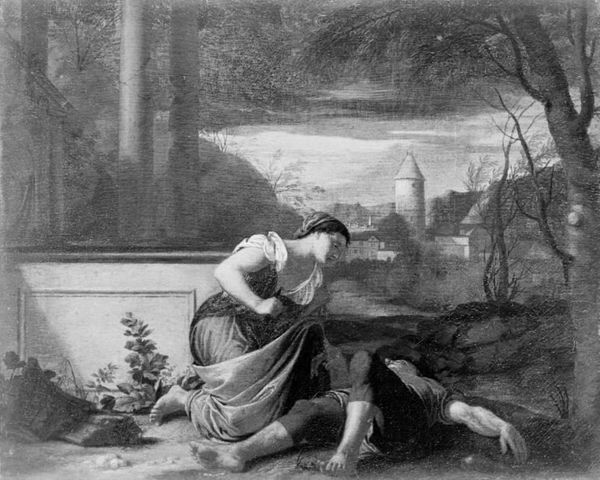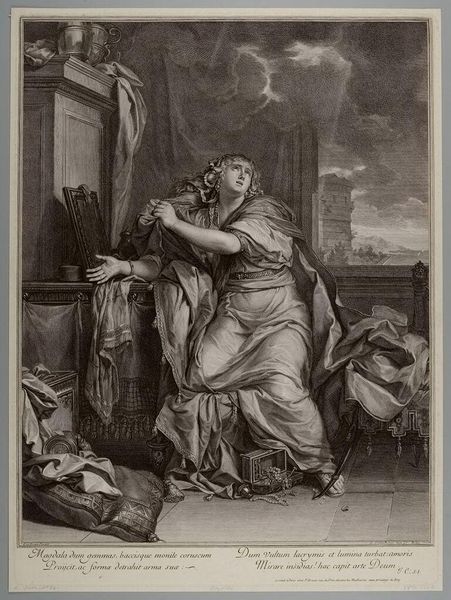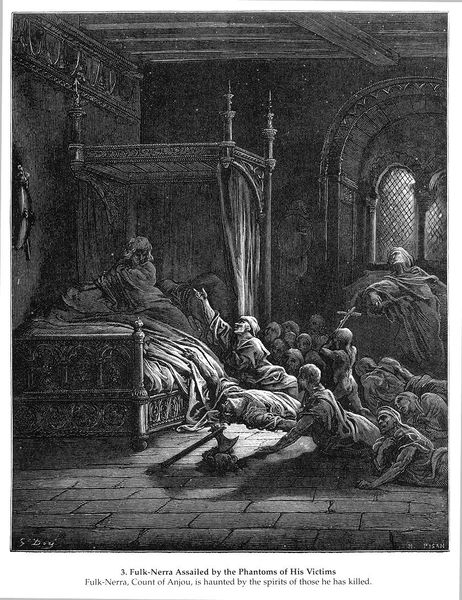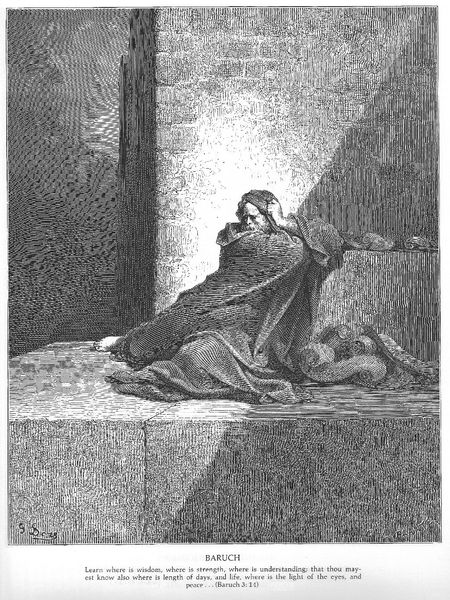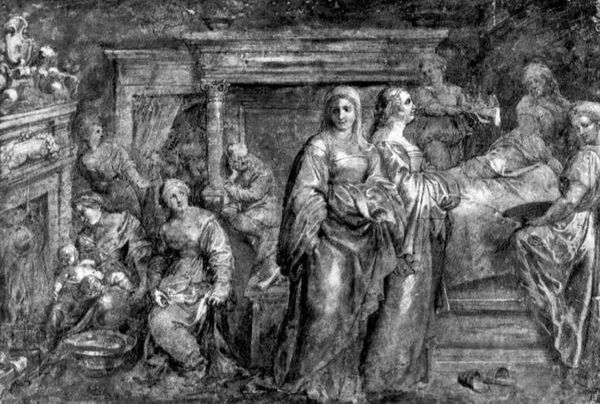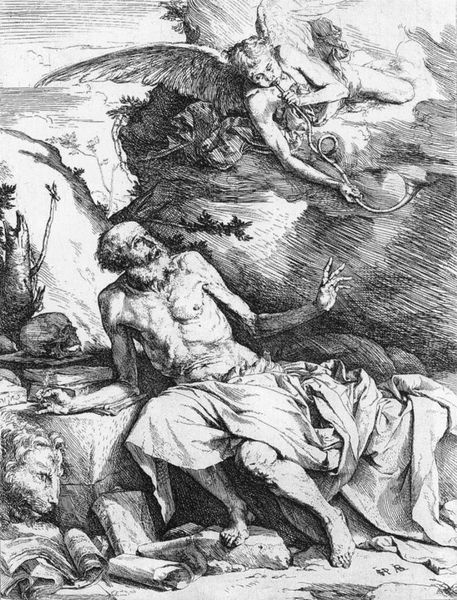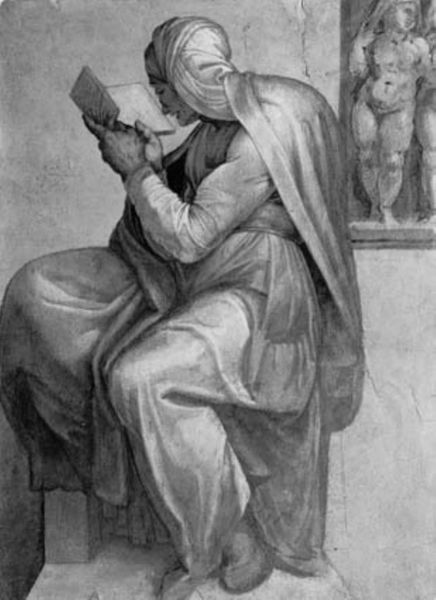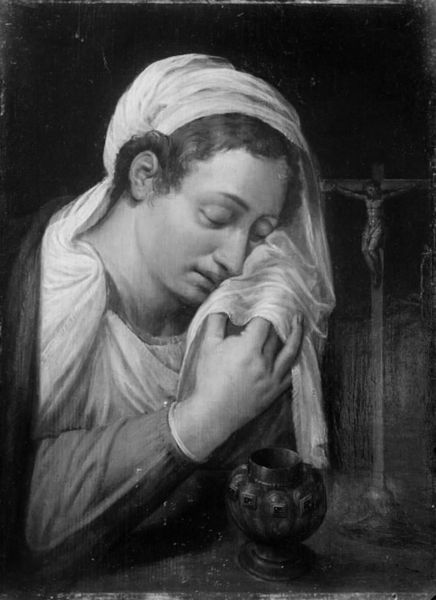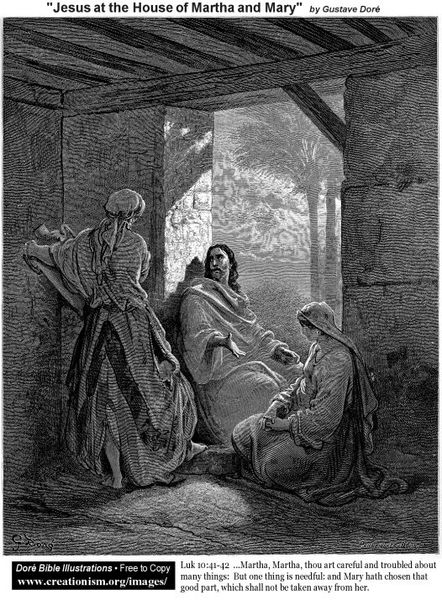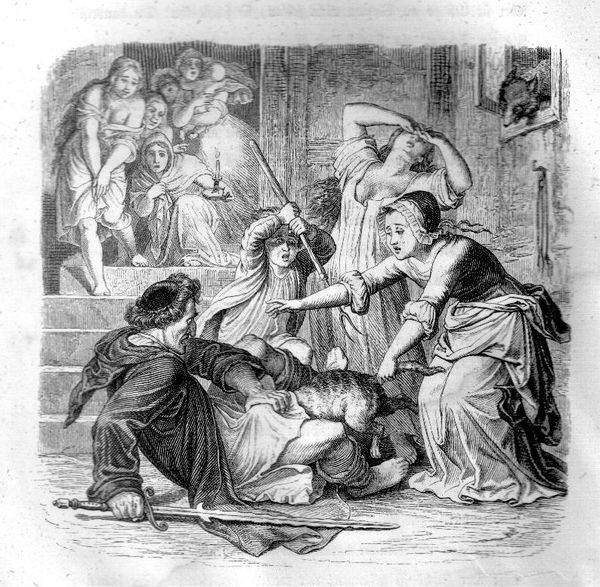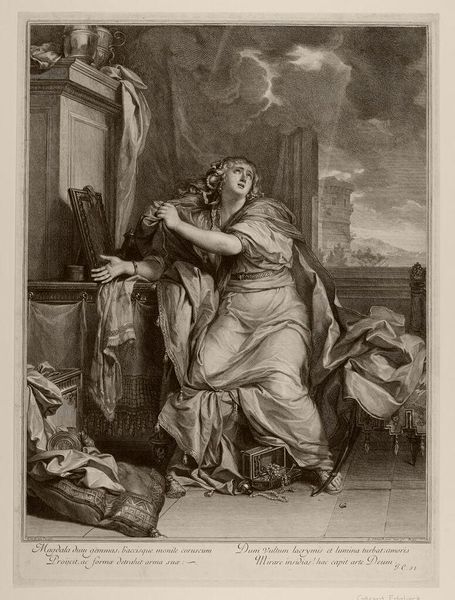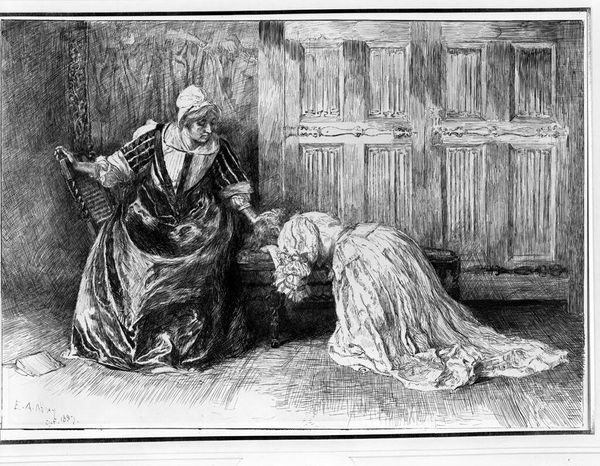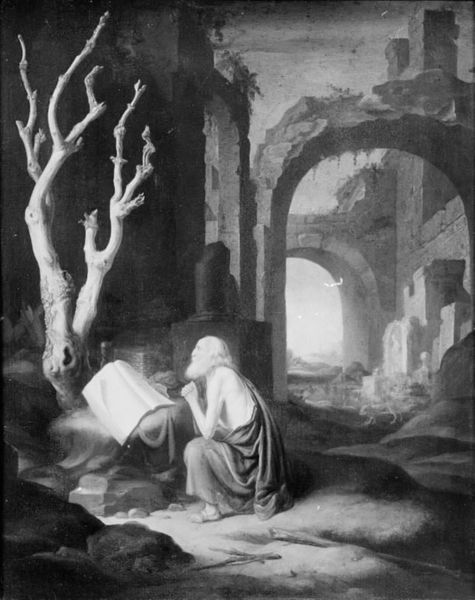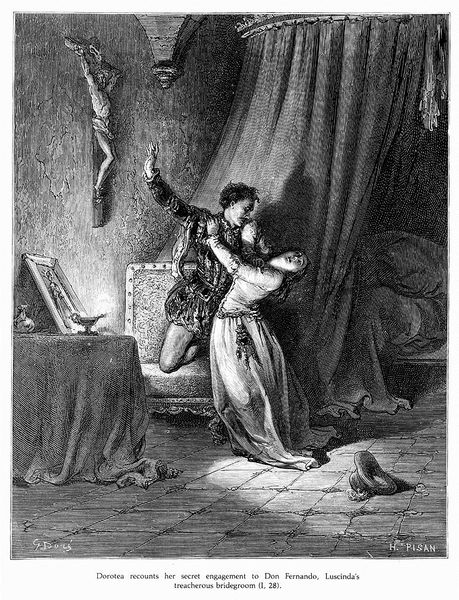
Copyright: Public domain
Wilhelm von Kaulbach made this engraving, "Gretchen in Front of the Mater Dolorosa," in 1859. The image shows Gretchen, from Goethe’s Faust, distraught with guilt, her bowed form rendered through careful lines that model drapery and shadow. As an engraving, this work is produced through the industrial processes of printmaking. This allows for the mass production of images, making art more accessible, but also placing the artist in a complex relationship to labor and consumption. The medium of engraving involves a division of labor, where the artist's design is translated by skilled engravers onto a metal plate. This plate is then used to produce numerous prints, each a multiple of the original design. The linear quality and replicability of the engraving process reflects the social context of the time, marked by the rise of industrial capitalism and the increasing commodification of art. Understanding the materials and processes used, along with the social context, deepens our appreciation of the artwork, challenging the traditional hierarchy between fine art and craft.
Comments
No comments
Be the first to comment and join the conversation on the ultimate creative platform.
